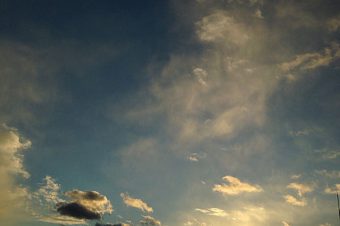- Make sure to step over the threshold: Each temple has a wooden section of the floor right before the temple. This section of wood is known as the threshold. The threshold forms a boundary. Positioned between the posts, lintel and door, the threshold is there to separate what lies outside from what lies within. In ancient times, a temples threshold was considered sacred and highly symbolic. One who crossed over a threshold was entitled to the hospitality and protection of those who were within the temple while they remained. These thresholds can be as high as eight inches. It is important to not step on the threshold – it is incredibly disrespectful – so make sure to step over it.

- Remove your shoes in the lobby of the temple: The entrance of Japanese temples often have a place for you to remove your shoes. This is not optional. Wearing shoes on tatami flooring is often not permitted. The majority of temples will provide storage shelves for shoes, and some even have lockers. Other temples provide a plastic bag so you can carry your shoes with you. Once you remove your shoes, pick up a pair of complimentary temple slippers to wear around the temple. Be warned, these slippers are one size fits all and anyone with large feet are in for an uncomfortable time.

- There is no dress code at temples: The question I get the most is, “Can I wear shorts or a dress to a temple?”. The simple answer is yes, there is no specific dress code when visiting temples. Unlike some other countries, at this time Japan’s temples do not require a specific dress code. This means you can feel free to wear t-shirts, shorts, and whatever else you want to wear.

- Make sure you bow to Buddha and be mindful of people praying: Once inside, bow toward the main idol as a sign of respect. If you are not Buddhist and are afraid of offending your religion while doing so, just realize that paying respect doesn’t mean believing in the Buddha. It is a simple sign of respect toward someone who was highly respected. It is also important to note that when you are inside the temple and you see someone praying, make sure to not walk in front of them. This is seen as cutting the connection between the person praying and the spirit world.

- Be mindful of photography: Temples have a much stricter and rather complicated relationship with photography. This is because photography disturbs not only visitors who come to the temple as part of their pilgrimage, but the monks that are working. Visitors might want to have some tea and enjoy the peaceful scenery. They do not necessarily want to watch people taking photos. These are places people go to contemplate and pray. More significantly, there has been a problem of photographers setting up tripods and blocking the walkways, trampling into gardens, and leaning on walls and pillars that are important cultural assets, just so they could snap a photo. This has led to a few temples banning photography completely. So please be mindful when you take photos visiting temples. If you are not sure if photography is allowed, ask one of the temple monks, as they are more than willing to let you know.

Latest posts from Spencer Meador
- Shitennoji- Temple - November 16, 2017
- Kiyomizu-dera (Osaka) - November 15, 2017
- Isshin-Ji Temple - November 14, 2017
Similar Posts
What are “Kami?”
One of the most prevalent religions in Japan is the Shinto religion. For Americans, understanding... Read More
The Difference Between Rinzai and Soto Zen
This past week I had the opportunity to attempt zazen meditation at both a Rinzai-zen... Read More
What are Torii Gates?
In front of every Japanese Shinto shrine there lay a gate made of two... Read More
My First Experience With Zazen: A Day at the Sojiji Temple
Earlier this week, I hopped aboard a train to Yokohoma and headed to Sojiji temple.... Read More
A traditional Shinto Wedding Ceremony
My wife and I were legally married (i.e submitted the form to City Hall) in... Read More
Cana feudal era General and famed military strategist act as a modern day Cupid?(Episode One: Setting the scene)
ZENDOUJI Temple, Tarui town, Gifu Prefecture Can a feudal era General and famed military strategist... Read More




